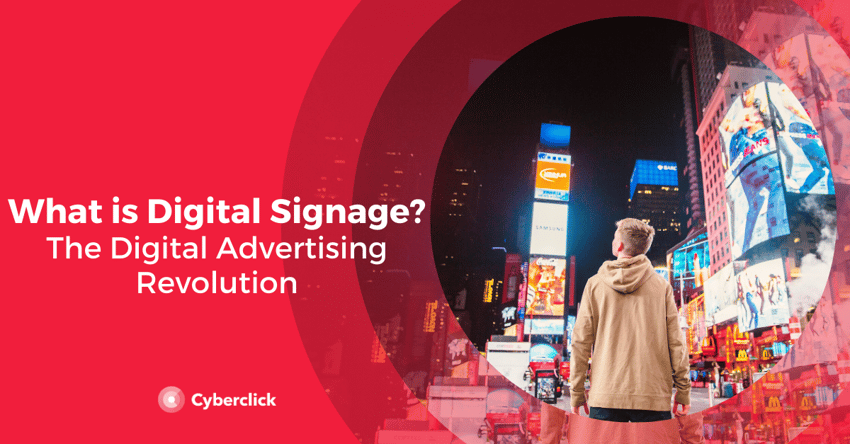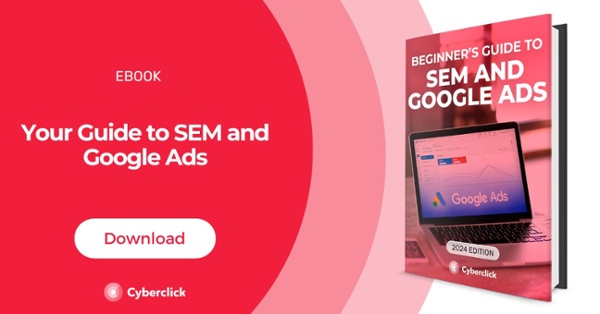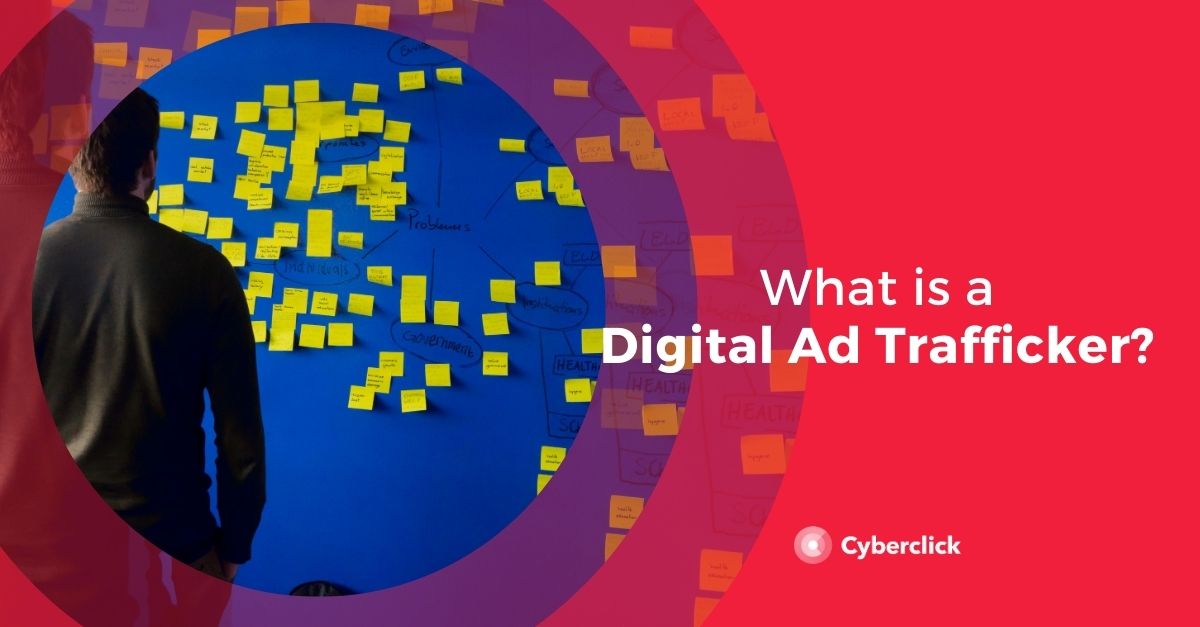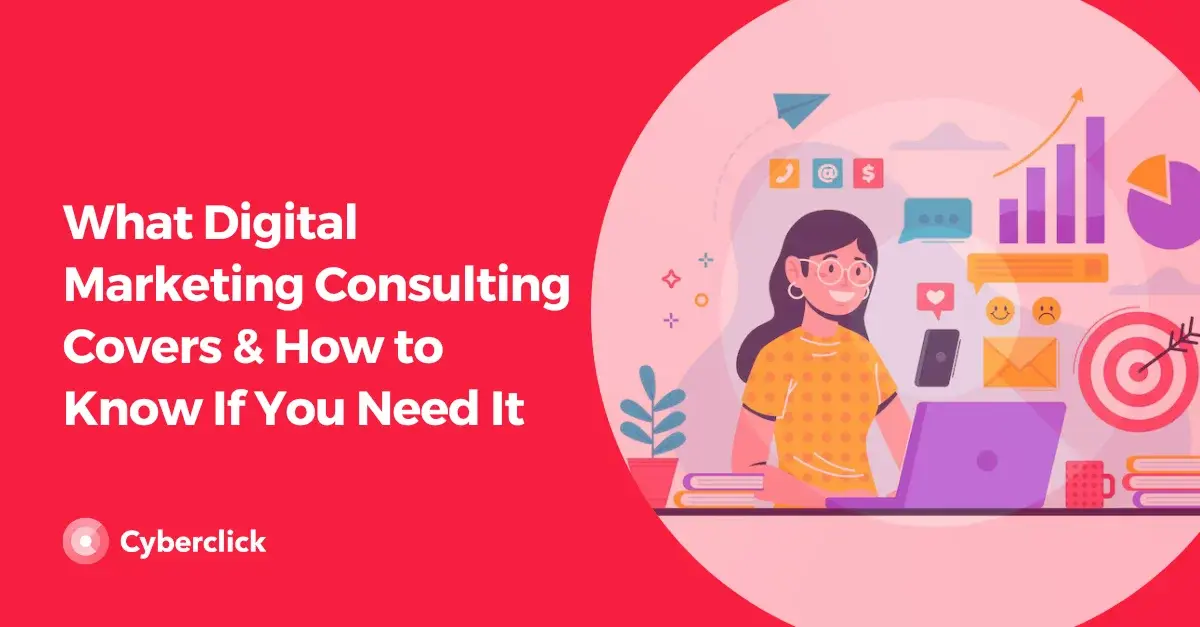What happens when digital advertising grows beyond the boundaries of mobile phones and computers and moves into the real world? The future of outdoor and point-of-sale advertising is here, and it's called digital signage. So let's take a look at what this is, the latest data about how it works and what you should consider when using it.

What is Digital Signage?
Digital signage (also known as dynamic digital signage or multimedia digital signage) is an advertising format that is based on the delivery of digital content through devices such as screens, projectors, touch panels or totems. Generally, these devices are located at the point of sale or in public places, and allow a company to create, manage, distribute, and publish its own content, combining the advantages of digital advertising and more conventional external advertising.
Basically there are two major types of digital signage: outdoor and indoor.
1. Outdoor Digital Signage
Outdoor digital signage ads are usually located in public places with a lot of traffic. A good example of this is Times Square, where digital advertising occupies the facades of buildings. Other popular locations are bus stations, gas stations, city access points or even the subway.
Launching a digital signage outdoor campaign usually requires quite a large investment, but in return you get great visibility and awareness.
2. Indoor Digital Signage
Digital indoor signage has more options. Here closer contact with the consumer is prioritized through smaller screens with interactive options.
The investment required for such a campaign is less than with external digital advertising, so it's within reach of companies with more modest budgets. According to some experts, this option is more likely to influence the purchase, since the consumer is at the point of sale and therefore in a situation conducive to conversion.
The Advantages of Digital Signage
-
Increases brand recall. 80% of people who view an outdoor digital display remember the message, so it's an effective format if you're looking for them to stay with you.
-
It's novel. Digital signage is a spectacular format that is still perceived as something new, even though it has been used for years. That's why it's a fantastic tool for brands looking to stand out from the competition by being cutting edge, up to date, and daring.
-
Take advantage of synergies at the point of sale. As marketers well know, not all purchasing decisions are rational and many of them are made at the last minute. That's why influencing the consumer at the point of sale can be key to getting them to choose your brand. Thanks to dynamic digital advertising at the point of sale, you can reach consumers right at the critical moment of the decision.
-
Get consumer’s attention. Compared to conventional outdoor advertising, digital signage has the ability to surprise people and capture their attention. So much so, that people spend up to 60% more time looking at a digital display than a conventional ad.
-
Improves the user experience at the point of sale. What better way to liven up a line than by interacting with engaging content? Digital signage can create unique experiences and make the user associate positive memories with branding.
-
It's interactive. One of the key advantages of digital versus conventional signage is that it allows the user to establish a dialogue with it. This not only increases engagement and recall, but can give valuable information about how users relate to a brand.
-
Allows integration with social networks and mobile devices. Digital signage, geolocation, and phones were made for each other. If you encourage users to interact with your digital posters through their phones and post the result on social media, you'll be taking advantage of a great source of viralization.
-
The content can be modified in real-time and adapted to different audiences and situations. Traditional outdoor advertising does not leave much room for modifications, as spaces are usually contracted for a certain time and the message cannot be changed. On the other hand, with digital signage, the advertiser has the power to modify the content in real time. For example, you can display screens with constantly updated information, or content that changes depending on the time of day. And of course, this option allows you to react quickly and adapt your message to optimize the contents based on the results.
Different Types of Digital Signage
Multimedia content is focused on playing dynamic, creative, fun, moving images on advertising screens; these may or may not be accompanied by text.
There are different types of content in digital signage that will make your internal and external communication effective.
- Customer reactions: Show your social networks on advertising screens and show the positive messages your customers send to you. It's a great way to enhance your brand image.
- Aligned team: Share the mission, vision, and values of your organization with your employees through content on screens located in strategic locations (restrooms, cafeteria, etc.), so that they always can see it.
- Motivation to employees: Expose achievements, goals, sales, and KPIs to arouse the curiosity and interest of your workers. With Smart Office content (graphics, tables, counters, etc.) on screens, you'll make them feel part of the organization and encourage them to aspire to more.
- Promotions and offers: If you are going to carry out a marketing strategy you can show on your digital information screens the characteristics of your product, prices, materials, stock levels, etc.
- Menu board: Are you part of the hospitality sector? Then it is ideal that you display your menu on your advertising screens. Update it according to the date and time and highlight your special offers.
- Pre-designed templates: Some Digital Signage software have elaborate templates that contain videos, widgets, and images that you can use to create diverse, complete, and functional content that matches your corporate identity.
- Own content: Add your own files, whether they're videos, PDF files, PowerPoint presentations or YouTube videos. On your channel you can do whatever you want!
- Entertainment and live TV: Do you have a private clinic? Are your clients bored in the waiting room? There is always the option to entertain by streaming news, placing cartoons for the little ones or content with interesting data.
- Wayfinding: Literally "find the way." Help direct your customers to their destination. If you have an office with many floors, you can show which floor your company's facilities are on by putting an interactive map on it.
- Transport schedule: For schools, universities, museums, etc. Inform interested parties about public transport timetables. You can also show important events where schools and universities will participate.
- Live Camera: Share what's happening between your offices using live on-screen video.
As you can see, there is a wide variety of content depending on your goals. Imagination has no limits, if you have an idea, use it!
Interesting Facts About Digital Signage
Ready to find out more? The IV Annual Digital Signage Studio contains a lot of information on the impact of dynamic digital signage. Here are some of the most relevant results.
- Outdoor media has a high level of recognition by users. The best known are fences and billboards, as well as supports at bus stops.
- Although outdoor formats are mostly associated with the non-digital format, 3 out of 4 users claimed to have also seen them in digital format.
- As for the outdoor results, 41% of these contents motivated or influenced the purchase and 34% made users think about the advertised product or brand.
- In terms of indoor media, posters are the most remembered format for 9 out of 10 users, followed by screens and totems (with a knowledge of around 50% of users).
- The coexistence between digital and non-digital formats is greater indoors than outdoors.
- 70% of users prefer digital advertising at the point of sale.
- 66% of respondents have ever interacted with digital support. The most commonly used methods for this are QR/BIDI codes and social media.
- In establishments that use dynamic displays, what is most valued is to have an interactive catalog, followed by the possibility to buy through a touch screen.
What to Keep in Mind to Succeed with Digital Signage
Finally, here are some key tips for carrying out a successful outdoor digital advertising campaign.
- First of all, reflect on your goals. As with any marketing campaign, the success of digital signage depends to a large extent on proper planning. What do you want to achieve with your campaign? What's the audience you need to reach? How does external digital advertising fit into the rest of your strategy?
- Choose the right hardware and software. The main factor to consider for a good choice is location. When it comes to hardware, you'll need a content player and a digital display.
- For outdoor digital signage campaigns, you will need to take into account several environmental factors. First, you need to know if the screen will receive direct sunlight, as you need the content to be visible at all times. You should also consider the weather, as depending on it will require different types of protection for the screens. And finally, you must also protect them from possible vandalism.
- In terms of indoor digital signage campaigns, the most important factor to consider is location. You need to study the places where consumers will pass the ad, so that they see the screens but do not consider them a nuisance. Look for an optimal height to encourage interaction and, of course, avoid low-quality screens.
- Content is king. Just as you take care of your online content marketing strategy, you also need to think carefully about what you're going to offer on your screens. Many brands bet on a mix of promotional and informative content, but in any case you have to offer value to users.
- Take care of the exposure time. Digital signage offers ephemeral experiences, so it is very important to look for synchrony with the user. In outdoor formats, which are placed in places of passage, it is crucial to be able to transmit your message in the time that the user will be seeing it. For example, placing screens with a one-minute-long video is useless if passers-by only spend 15 seconds in that area. In indoor formats, you can look to increase the user's exposure time through interactive experiences.
Surely this article has helped you to better understand what digital signage is and how you can implement it in your online marketing strategy.
Graduada en Administración de Empresas en Lisboa y un posgrado en Gestión de Productos, Chantal se ha especializado en la Publicidad en Redes Sociales. En Cyberclick lleva la gestión de cuentas y conceptualización de estrategias digitales.
Graduated with a Degree in Business Management in Lisbon and a Postgraduate degree in Product Management. Specialist in Account Management and Digital Marketing strategies, with special focus on Social Ads channel.






Leave your comment and join the conversation